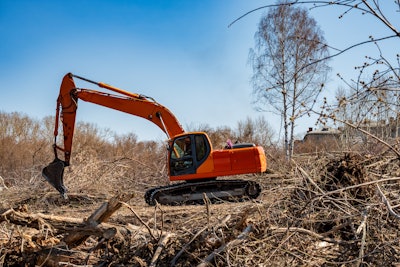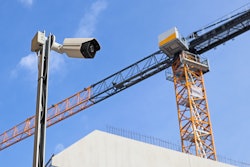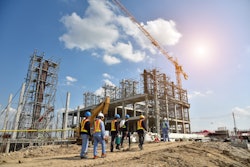
Hurricane season (June – November) along the coast is unpredictable, but your response plan shouldn’t be. Whether you’re running paving crews, vertical builds, or earthwork projects, securing your site before a storm can protect your team, equipment and reputation. But you’re in luck – we’ve got the perfect storm-ready checklist to get you started.
Pre-Season Prep (Early-Mid Summer)
☐ Create a written hurricane response plan
Assign roles for your crew, document emergency contacts, and outline evacuation procedures. Be specific: who shuts down utilities, who documents the site, who oversees cleanup?
☐ Build a storm supply kit
Stock up on essentials like sandbags, tarps, tie-downs, duct tape, fuel, generators, trash pumps, flashlights, and first-aid kits. These materials disappear quickly once a storm is in the forecast.
☐ Document jobsite conditions beforehand
Take time-stamped photos and videos of equipment, materials, and structures. This helps with post-storm insurance claims and verifies pre-existing conditions.
72–48 Hours Before Landfall
☐ Clean and inspect the jobsite
Remove loose debris, clear storm drains, and secure fencing, scaffolding, and signage. Anything that can move in high wind becomes a hazard.
☐ Assign a weather monitor
Designate a team member to track National Weather Service updates and issue site alerts as conditions change.
48–24 Hours Before Landfall
☐ Secure materials and equipment
Band and cover stored lumber, wrap or tarp materials, and move tools or small equipment offsite if possible. Anything left behind should be tied down or anchored.
☐ Reinforce flood-prone areas
Deploy pumps and sandbags around excavations, basements, or foundations. Make sure fuel is available and pumps are ready to run.
☐ Lower or brace tall structures
Drop crane booms and secure vertical elements according to manufacturer specs or engineer recommendations.
24 Hours or Less
☐ Shut off utilities
Turn off gas, electric, and water hookups to prevent leaks or fire hazards.
☐ Final walk-through and evacuation
Remove any remaining unsecured materials, board up windows and doors, and take final photos for documentation. Then, clear the site for safety.
After the Storm
☐ Inspect for safety hazards
Watch for standing water, structural damage, gas leaks, and electrical hazards. Don’t send your crew back in until the site is safe.
☐ Document and report damage
Photograph everything, contact your insurer, and communicate impacts to clients and project partners.
☐ Debrief the team
What worked? What didn’t? Use what you learned to improve your storm prep for the next time.




















